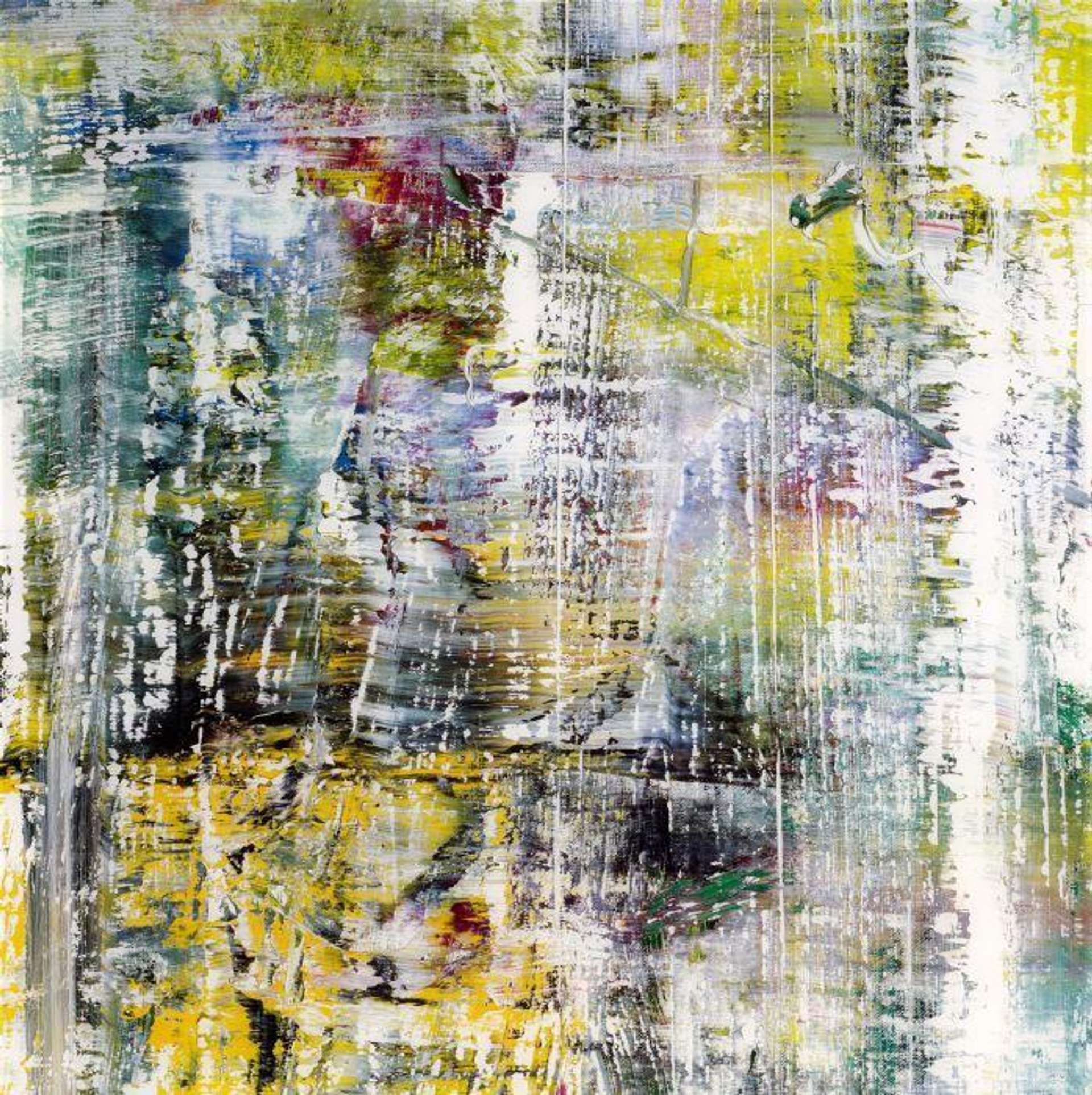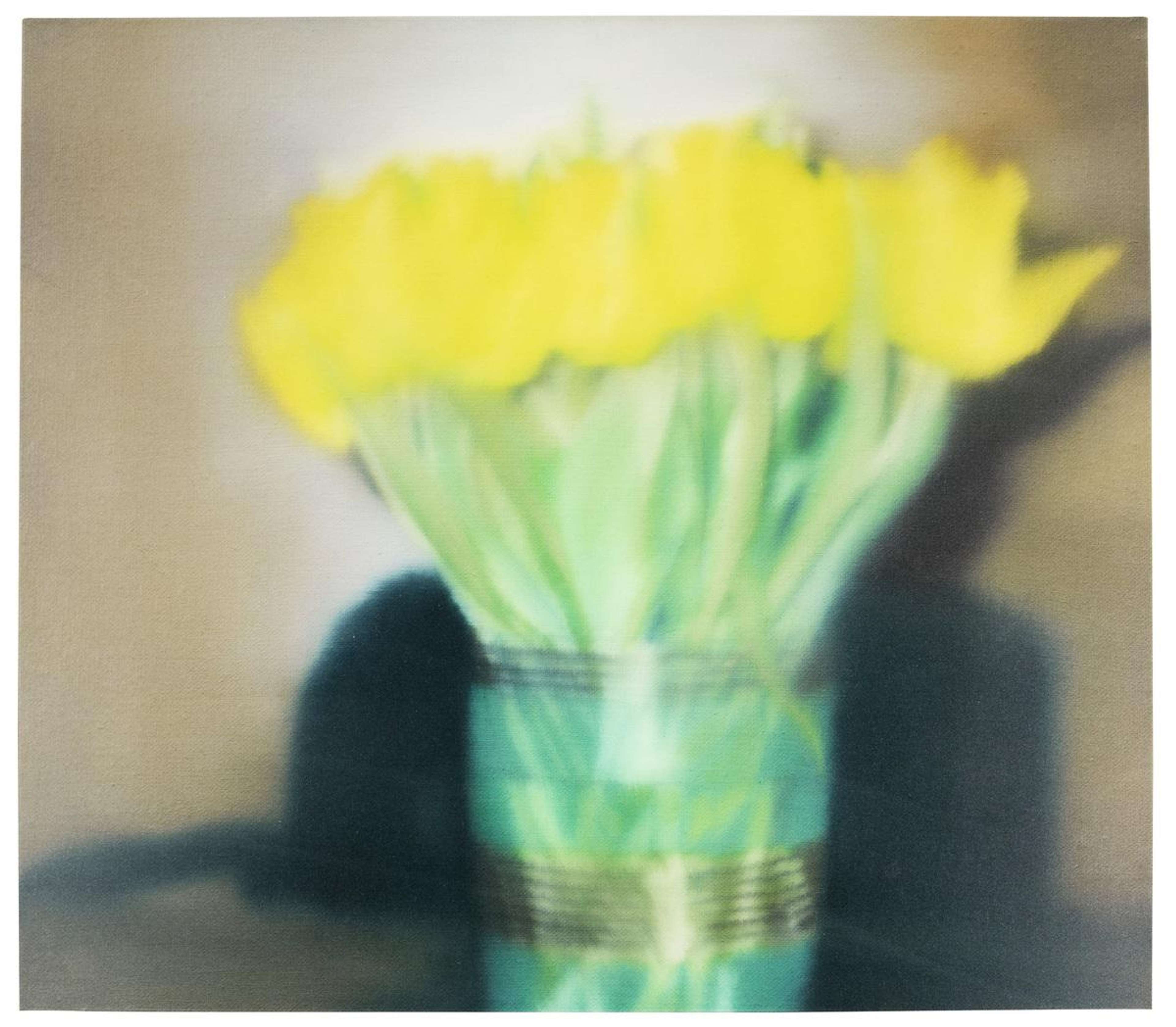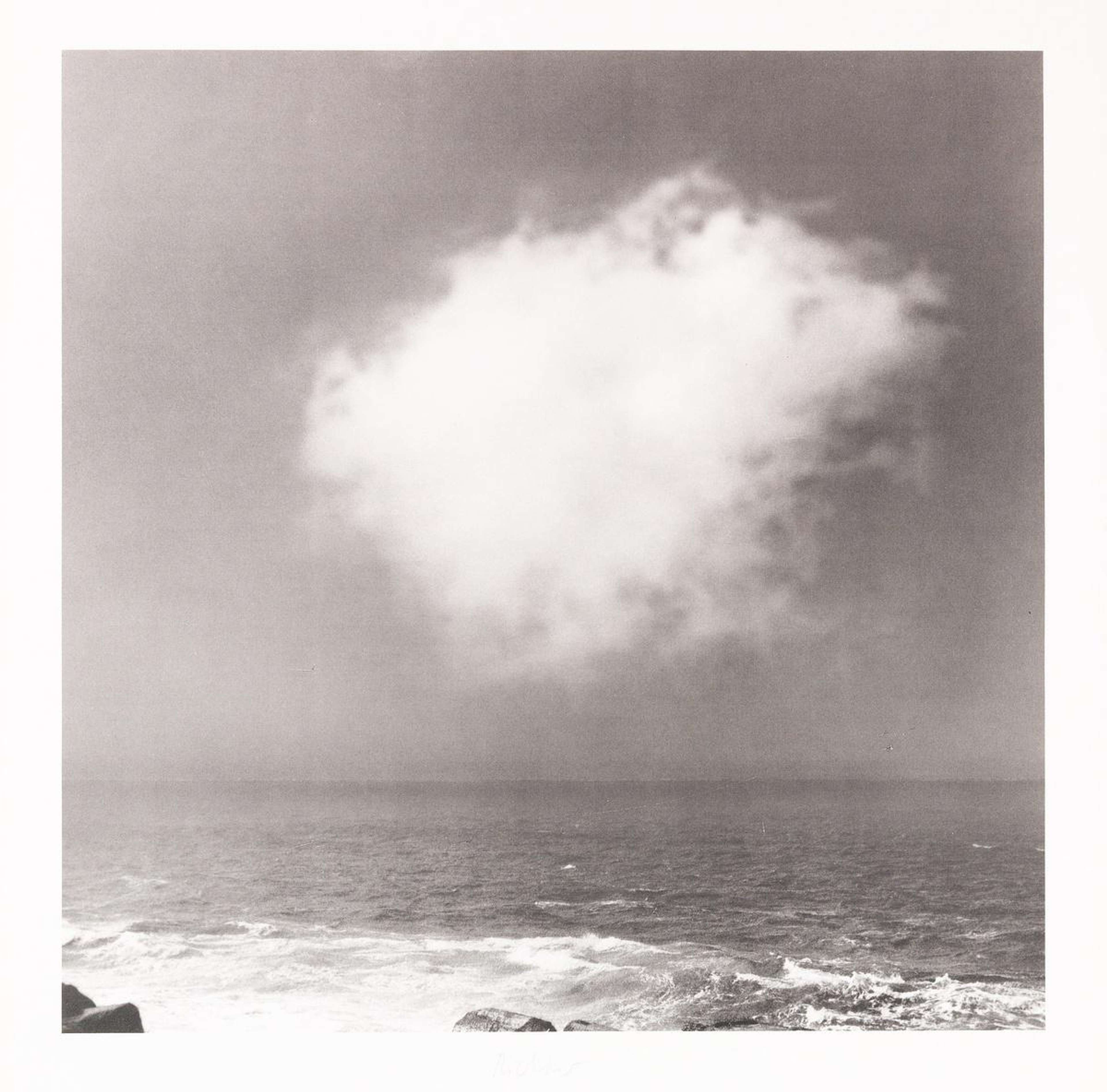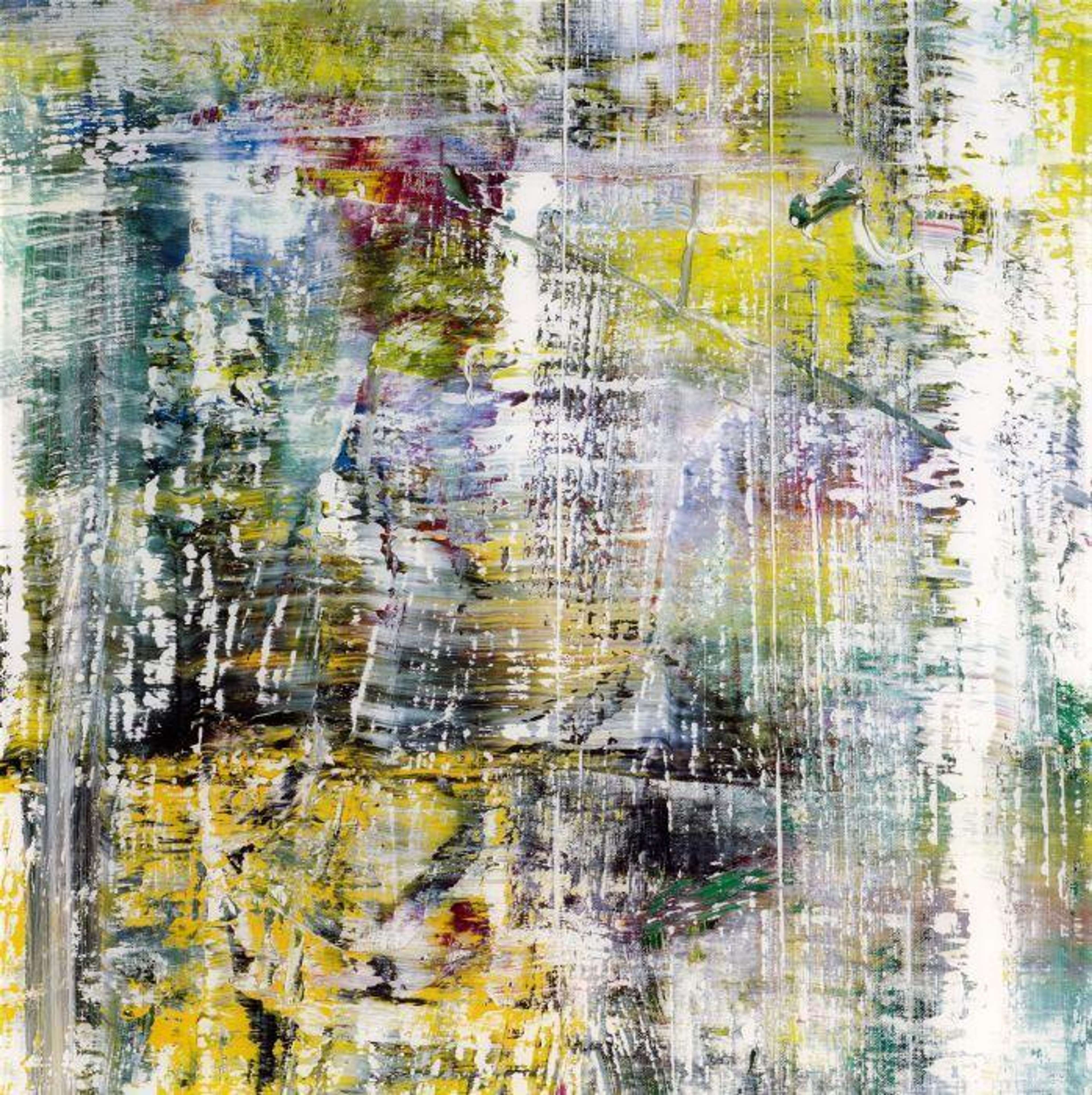A Buyer's Guide To Gerhard Richter

 Kerze © Gerhard Richter 1988
Kerze © Gerhard Richter 1988
Gerhard Richter
141 works
Key Takeaways
Gerhard Richter's print market offers and accessible alternative to his originals that sell at marquee auctions. His aesthetic blends artistic genres including Photorealism, Abstraction and Pop Art. Richter is represented by various global high-end galleries and has worked with various publishers including HENI editions. He has published and produced a six volume catalogue raisonné and the Gerhard Richter Archive acts as a digital archive offering expert advice for collectors looking to invest in his work. Discover how to navigate this dynamic market and make informed purchasing decisions with this buyer's guide.
Gerhard Richter’s print market offer an appealing entry point for collectors of one of the most influential contemporary artists making his limited editions highly sought after. This buyer’s guide offers key insights into Richter’s print market, covering trends, authentication tips, and advice for building a valuable collection.
Why Collect Gerhard Richter?
Richter is regarded as one of the most influential living artists, creating groundbreaking works since the 1960s. His art navigates two key themes: Photorealism and Abstraction, with much of his success stemming from his ability to communicate broad concepts through “readymade” images and his distinctive squeegee wiping technique, most notably seen in his Abstraktes Bild series. Richter’s early works are also highly sought after, utilising a reproduction technique reminiscent of Pop Art by transforming photographs into paintings and editions, often featuring landscapes, still lifes, and intimate moments–many of which are archived in his Atlas project, a collection of news photos, advertisements, and colour swatches he began in the 1960s. Since representing Germany at the 1972 Venice Biennale, Richter has consistently offered collectors a unique interplay of artistic genres and innovation, a legacy that is strongly reflected in his prints and editions, further cementing their prominence in the market.
Starting A Gerhard Richter Collection
While Richter is best known for his paintings, his engagement with prints and editions since the mid-1960s adds a dynamic complexity to his market. His printmaking spans a broad array of series, some signed, others unsigned, with notable collaborations with HENI Editions in 2014.
Atlas Archives
Early editions were often based on images from Atlas, his archival collection that served as a visual diary. These prints, like his 1966 depictions of Elisabeth II and Mao, showcase Richter’s Pop Art influences and his ability to appropriate images and blur genres. However, works such as Mustangs and Bahnhof (Hannover) reflect more politically charged themes, referencing post-WWII industrialisation. His famous Pyramide (1966) echoes his sought-after landscape canvases, exploring the transformation of photographic material into editions and re-interpretations. These early prints were produced in varying edition sizes, with most unsigned. The rarity and significance of these early signed works, combined with Richter's status in the art world, result in prices ranging from £8,000 to £12,000 for an individual print.
Farbfelder and Strip Colour Fields
Richter’s innovative approach to abstraction and colour theory in printmaking aligns him with other revered artists like Bridget Riley, Josef Albers, and Frank Stella, all of whom explored similar concepts in their print works. His early exploration into this realm is evident in the Farbfelder series, which consists of 1,260 colour fields and pushes the boundaries of printmaking through its use of offset prints, presented in a cardboard portfolio published by Galerie Heiner Friedrich in Munich. These editions vary in format and signature. Individual prints from the series can fetch up to £15,000, while complete portfolios range from £50,000 to £100,000, emphasising their value and appeal among collectors.
Strip series, released in 2011, represents a more contemporary take on printmaking, further showcasing Richter's dynamic approach. These works are unique in their format, printed on paper mounted between aluminum and Perspex. Despite being prints, Richter referred to them as paintings, derived from his earlier Abstract Painting 724-4. The Strip series creates a digital language of vertical colour bands and challenges the definition of what constitutes a painting, especially when there is no traditional use of paint. This aesthetic and technique are ones that Richter continues to expand upon across various mediums, most recently showcased in his Strip Tower, unveiled at the Serpentine Gallery, London, in Spring 2024. This new work highlights Richter’s ongoing exploration of abstraction and digital manipulation, demonstrating his commitment to pushing the boundaries of both print and conceptual art.
Heni Productions: Cage Editions
Cage prints are based on Richter's abstract series, titled after composer John Cage, created between 2006 and 2008. The original Cage paintings were a group of six large-scale abstract works made for the 2007 Venice Biennale and characterised by layers of scraped paint and rich textures.
The Cage prints were released as a limited edition in 2020 by HENI Editions. The series consists of six individual prints, each meticulously reproducing the abstract qualities of the original paintings. Each Cage print is signed and numbered by Richter, with editions reaching up to 200 and are typically valued at £20,000 on the public market.
Given the breadth of Richter's print market and his continuous experimentation, he also created the Cage Grid works. One notable example is Cage Grid 1 (2011), an innovative reworking of his 2006 painting Cage 6, which is part of a cycle of six paintings. Using a Giclée print, Richter divided the original painting into 16 equal parts. This edition was limited to just 16 copies, plus four artist’s proofs (AP), making the complete set exceptionally rare. At auction, the complete set can fetch over £500,000, while individual prints, even when separated, command a premium, typically valued between £60,000 and £100,000 each. If you're interested in acquiring Richter prints, MyArtBroker offers specialist consultations to help guide you through his market–get in touch with us today for expert advice.
Is Gerhard Richter A Good Investment?
Richter’s prints offer a compelling investment opportunity, backed by a career spanning six decades and a presence that dominates both the primary and secondary art markets. His work regularly features at major international art fairs, represented by mega galleries including Thaddaeus Ropac, David Zwirner, and Gagosian. While his large-scale paintings have proven to consistently achieve multi-million dollar sales at auction, the value is often driven by the intricate surface quality and texture that characterise his abstract works. As fewer of Richter’s top-tier original works come to market, interest in his limited edition prints has increased, with his collaboration with HENI Editions reflecting a growing demand for prints as a medium. This publishing partnership also highlights Richter’s ongoing interest in reinterpreting images and exploring materiality through innovative methods.
What Are Some Popular Gerhard Richter Prints Among Collectors?
In 2023, over 200 Richter prints were sold publicly on the secondary market, with only 44 remaining unsold, resulting in an impressive 80% sell-through rate for his print market. This performance reflects the demand for his works, particularly in the print sector. Below are some of the most sought-after and trending prints, which we anticipate will continue their popularity well into 2025:
Strip 920-4: This large-scale print, nearly 3 metres wide, exemplifies Richter's groundbreaking Strip series. Strip 920-4, an early and pinnacle piece in this series, showcases a vibrant interplay of green, pink, yellow, and white tones. Derived from Abstraktes Bild (724-4) (1990), each print in this series is uniquely numbered, offering individualised colour schemes and sizes, further enhancing their rarity and desirability. In 2021, this piece set the auction record for a Richter print, selling for over £1 million.
Kerze II (Candle II): This work marks an evolution of Richter's photorealistic Kerze (candle) images. In Kerze II, realism is seamlessly merged with abstraction, while also incorporating recognisable imagery that nods to Pop Art, creating a rich blend of aesthetic styles. Some view the candle as a symbol of resistance against East Germany’s regime, though its enduring popularity is also linked to its use as the cover art for Sonic Youth’s Daydream Nation. Rarely seen on the market, Kerze II set a record in 2022 when it sold for £106,000 at Christie’s, with its most recent auction appearance that December.
Cage Grid I, Single Part J: This print is one segment of the complete Cage Grid I set, consisting of 16 individual parts. The full set achieved a price of £529,412 in November 2022. As the collection has been broken up, matching individual prints from the edition has become increasingly rare, pushing their value higher. Each part is numbered individually (A–O), and single prints can now fetch upwards of £100,000 due to their scarcity and the appeal of completing the set, especially with matching edition numbers.
How To Authenticate A Gerhard Richter?
Authenticating a Richter print requires careful attention to detail and a strong understanding of the artist’s documentation process. Richter has collaborated with renowned galleries and publishers, including HENI Editions and various European galleries, making it crucial to verify the provenance of any print. His official website serves as a valuable digital archive of his extensive collection, established in 2017 in cooperation with the Gerhard Richter Archive in Dresden. This resource is particularly useful for researching his prints and editions, though it does not provide direct authentication services. However, the archive meticulously catalogues each of his works, making it an essential tool for verifying legitimacy. Every artwork has been systematically documented and numbered since 1962, following the strict standards set by Richter himself.
It's important to note that not all of Richter's prints are signed, which can be a critical factor when assessing authenticity. Knowing how many prints in the edition were signed versus unsigned is essential for proper evaluation. Richter has also published a six volume catalogue raisonné, which should be referenced when considering a purchase. Buyers should also be aware that Richter does not recognise any works created before 1961, and considers everything produced before then outside his official body of work. As such, there is no legitimate market for pre-1961 pieces, and they rarely, if ever, appear for sale. Authenticating a Richter print requires careful research, but with well-documented resources, the process becomes more manageable. Get In touch with us to speak with one of our specialists.
How To Check The Condition Of A Gerhard Richter Print?
Assessing the condition of any print requires close attention, as improper handling can lead to irreversible damage. Begin by inspecting the surface for visible signs of wear, such as creases, tears, discolouration, or fading. Pay particular attention to the edges, as they are often the most vulnerable to damage. Whenever possible, view the print unframed to fully evaluate the paper quality and check for any hidden imperfections that may have been caused by improper framing or mounting. Condition issues can significantly affect the value of a print, so careful handling is essential. In the case of Richter's prints, older works from the 1960s Atlas prints may naturally show signs of wear and should be handled with extra care. His Strip works, mounted on perspex, are also prone to damage due to the material’s fragility and should be examined carefully. Additionally, his earliest Cage editions, produced by HENI, were mechanically produced to a high standard, so any signs of damage in these prints can directly impact their value.
For high-value works like Richter’s, it is always advisable to consult a professional. Specialists can offer a detailed analysis, assessing colour consistency, paper quality, and authenticity markers. For further guidance, you can visit The Directory for expert advice on print condition assessments, conservation, framing, and more.
Where Can I Buy A Gerhard Richter Print In 2024?
Whether you're an experienced collector or making your first purchase, it's crucial to choose a reliable source. Galleries and auction houses are trusted options, but their premiums can be quite steep, sometimes reaching up to 25%.
At MyArtBroker, we offer the expertise of working with a specialist while providing the convenience of online buying at fair market value. Our specialists can help you acquire a Richter print through our global network of sellers, outside of peak auction seasons and assisting with provenance, authenticity, and condition verification to ensure a secure purchase.
Looking To Buy A Richter Print?
Explore Gerhard Richter prints on the Trading Floor and sign up for MyPortfolio Collection Management.
Why Use MyArtBroker To Find Your First Gerhard Richter?
A Dedicated Specialist
At MyArtBroker, we provide a seamless and secure experience for buyers by connecting you directly with our expert specialists. Whether you're looking to acquire a specific Richter print to start or grow your collection, our dedicated team will guide you through our extensive network of collectors who buy and sell daily. We conduct thorough condition checks and authenticate the artwork, ensuring you can purchase with confidence. We also manage the delivery process, offering the trust of working with a specialist alongside the convenience and transparency of an efficient online platform.
Our Network
Our global network encompasses over 30,000 collectors, dealers, galleries, and independent experts actively buying and selling Richter works daily. In collaboration with these partners, we ensure access to the most sought-after and authentic Richter prints. With over 75,000 visitors to our website each month, we consistently publish updates on market trends, new releases, auction results, and expert insights. We also provide comprehensive biographies and detailed essays on Richter’s editions.
MyArtBroker has access to a wide network of art collectors offering Richter artworks. If you're interested in purchasing a Richter print, contact us, and we’ll expertly guide you through the process.
Explore our selection of Richter prints on the Trading Floor and sign up for MyPortfolio Collection Management to keep track of your acquisitions.


















